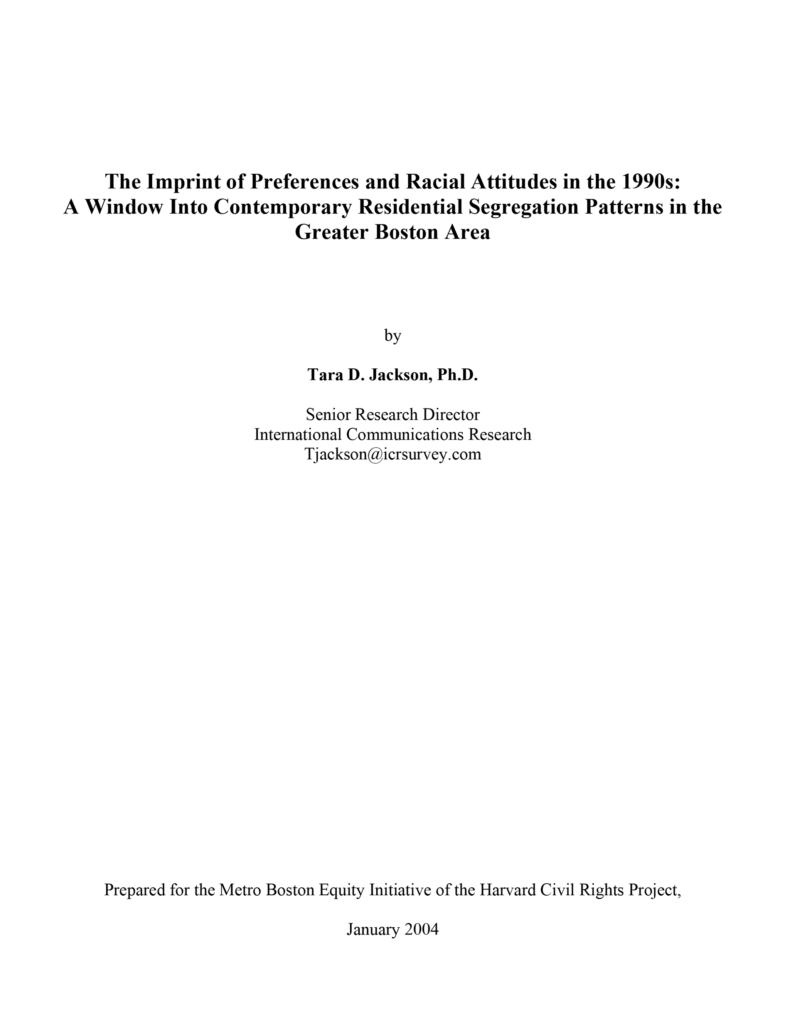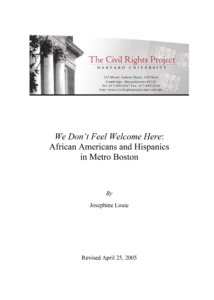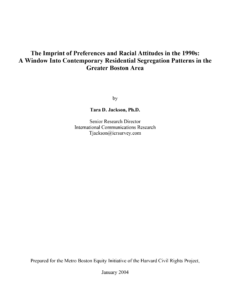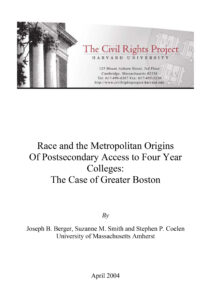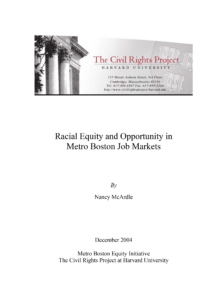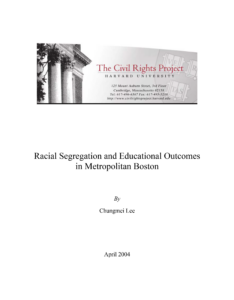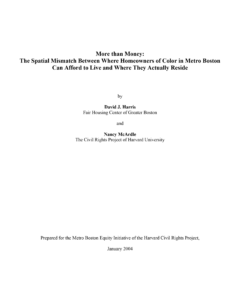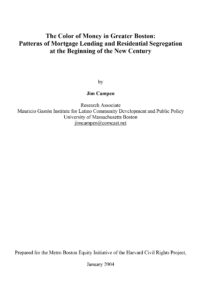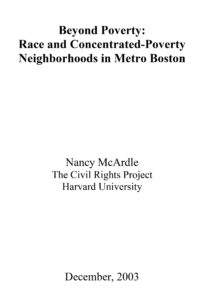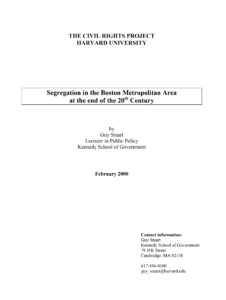Introduction
In the last quarter of the twentieth century, three of the most important socioeconomic and demographic factors contributing to the decline in residential segregation were the suburbanization of people and jobs, the economic prosperity of the 1990s, and the surge in the number of multiethnic metropolitan areas. These trends started slowly in the 1960s and 1970s, gained momentum in the 1980s, and surpassed most expectations in the 1990s (Frey & Farley 1996; Glaeser & Vigdor 2002; U.S. Bureau of the Census 2003). Still, residential segregation is demonstrably complex and resistant to change. Many cities surely will remain highly segregated (and, in the case of a select few, hypersegregated) for decades to come. Despite the progress that has been made to date, residential segregation remains one of the most vexing social and policy problems facing American society.
Patterns of Residential Segregation in the Greater Boston Area
Few metropolises more dramatically illustrate the progress of integration and the persistence of segregation than does the Greater Boston area. Contextually, the area’s transitions are taking place within a densely concentrated urban environment (multifamily housing dominates many of the cities closest to the city ring) with a fairly recent history of racial strife around key policy issues, including education and housing (Lukas 1985; Campen 1992). The Greater Boston area of the 1990s— characterized by tremendous economic prosperity, immigrant population growth, rising housing values, and increasing homeownership rates—is fairly representative of emerging multiethnic metropolitan areas nationally (Frey & Farley 1996). Multiethnic Greater Boston went from being the 20th most segregated metropolitan statistical area (MSA) in the nation in 1990 to being the 27th most segregated in 2000 (U.S. Bureau of the Census 2003). These numbers appear, in part, to be on the strength of the ebbing white population, a 4 percentage point decline in black-white segregation, and the significant decline in suburban blacks’ and Hispanics’ isolation from suburban whites (The Lewis Mumford Center 2003).
As central as these population trends were to declining segregation in the Greater Boston area in the 1990s, even more seismic demographic shifts would have to occur to effectively reduce the level and persistence of residential segregation among blacks and Hispanics. Greater Boston area blacks remain the most segregated racial/ethnic group in the metropolitan area. By recent calculations based on the most recent census data, almost 70 percent of Greater Boston area blacks would have to be relocated throughout the metropolitan area to achieve residential evenness, or complete integration (U.S. Bureau of the Census 2003). A snapshot of the housing patterns of Greater Boston area Hispanics reveals that during the last decade, Hispanics experienced increased suburban segregation (McArdle 2003). These outcomes suggest that, whatever the processes at work in creating or sustaining segregation, the consequences are distinctly different for Greater Boston area blacks and Hispanics.
The Metro Boston Equity Initiative is devoted to analyzing race relations and racial equity issues not simply in the city of Boston, but across the entire metropolitan region. Although greater Boston still has a large white majority and suburban sectors with very little diversity, immigration of Latinos and Asians is driving the region’s growth, and much of this population increase is taking place well outside of the city limits.
In compliance with the UC Open Access Policy, this report has been made available on eScholarship:
